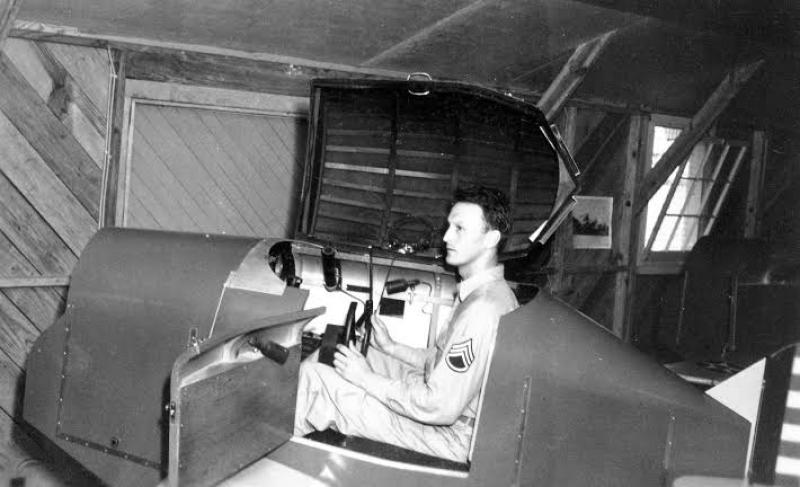Origins of the flight simulator
Best known early flight simulator was the Link trainer known as the blue box. Jimmy Wanjala info@airspacenews.co.ke Popularly known as “the sweat box” or “the Stimulator” by aviation crew due to the nature of excitement it attracts, simulation has had a long and varied history. A brief look into the past will touch on the impact simulation has had in the aviation industry. Inherently, simulation was adopted and developed for safety and efficiency; a method for training and understanding critical behaviour and expectations for communication, teamwork, resource management and situational awareness under varying circumstances in aviation. Two early flight simulators appeared in England within a decade after the first flight by Orville and Wilbur Wright in September, 1903 at kittyhawk North Caroline, US. The simulators were designed to enable pilots to simulate simple aircraft manoeuvres in the three flight dimensions: nose up or down, yaw, turns to the left or right. This was enhanced manually by two people, one holding and rocking the simulator wingtip and the other the tail to also introduce simulated turbulence. However the best known early flight simulator was the Link trainer known as the blue box, developed and produced by Edwin Albert Link in Binghamton, New York, which he started developing in 1927. He later patented his design in 1929. Link used to train pilots and other airmen under instrument flying conditions. He built a model of an aircraft cockpit equipped with an instrument panel and controls that realistically animated all movements of an aircraft. The trainer was modified as aircraft technology advanced particularly during the second World War. Electronics helped make the flight simulator increasingly realistic. The use of analog computers in the early1950s led to further improvements. In early 1960s, electronic, digital and hybrid computers were adopted; speed and flexibility revolutionalised simulation systems. The development of virtual reality have made it possible to reproduce highly complex real life conditions. Incorporating the use of hydraulic mechanisms to further enhance the real flight experience including centrifugal, negative and positive gravity force in the three axies of flight, also including severe turbulence experience. Link was born July 26 1904. He died of cancer September 7, 1981 in New York. Thanks to Link, it has eventually become possible to train on a state-of-the-art simulator and proceed to the actual aircraft and take off as a fully qualified, licensed crew member. However, the purpose of simulator flight training is not to completely substitute actual on board training, but to thoroughly familiarise the student pilot with the equipment concerned, before undergoing expensive and possibly dangerous actual flight training manoeuvres in an aircraft. The history of flight simulation has led to a greater understanding of the learning process and its application to the training task. The simulation industry owes it’s further development from investments by governments, commercial aviation operation and space programme applications. In time, aircraft instrumentation has been developed sufficiently to permit accurate “blind” flying on instruments alone owing to its reliability. In the absence of the flight simulator, regulators still require a pilot to have experienced a minimum number of hours on Type and demonstrate a certain level of proficiency covering various aspects of flight which would include but not limited to on ground and in-flight emergency procedures, single engine operations, all engines out procedures, rapid decompression, emergency descent, engine fire, cabin smoke system malfunctions and many other possible aircraft scenarios. All these would otherwise be either impossible to simulate on a normal aircraft, taking into account cost implications, crew safety and viability of the exercise. For example you may crash a simulator and learn from the exercise. www.airspacenews.co.ke

